(This is the transcript of Episode 1A, if you'd like to listen to it, you can find it here.)
Yvainglory
This week on the Myths and Legends podcast, I’ll introduce the show and discuss what it’ll be about. Then, we’ll start right in on the story of a knight from King Arthur’s round table, who’s poor decision making is rewarded with a castle, magic rings, and a pet lion. Then, at the end of the show in the mythological creature of the week segment, I’ll talk about tiny, invisible Icelandic elves…who like to party.
This is the Myths and Legends podcast episode 1A, Yvainglory.
Introduction
Welcome to this, the inaugural episode of the podcast! As you no doubt gathered from the name of the show, we’ll be talking about myths, legends, and folklore in general from all around the world. There are many, many reasons to know these stories, and I’ll just mention a few. They are really helpful to know other cultures and people, and can, in many ways, be as informative as a historical record in knowing historical cultures as a whole. They inspire current stories, and may even inspire you. For example, the next larger story I’ll go over is the Saga of the Volsungs. It’s a little-known Norse saga that was part of J.R.R. Tolkien’s inspiration when writing Lord of the Rings. Lastly, they are really just interesting, bizarre, ridiculous, and touching stories, and I’m excited to tell them.
I’ll try to tell them as close to the original story as I can, trying to avoid the intervening years with the cultures and adaptations that have put their spin on things. For example, the story of Aladdin, a Middle-Eastern folk tale about a boy and a genie, is way different than the popular Disney movie. In the original tale, Aladdin was actually Chinese, the story was set in China, and his genie, which didn’t grant wishes, originally came from his ring. Ok, here’s another one that Disney has changed – the story of Mulan, the Chinese girl who took her aging father’s place in the army. Contrary to the movie, Mulan fought for 10 years without being discovered, and retired to many accolades. Ok, one more. In the original story, the Holy Grail was actually accompanied by an equally-holy “lance that bled from its tip,” which was quietly minimized on later tellings. That was probably a good idea, because the title, “The Quest for the Holy Lance that Bleeds from its Tip” is way less snappy than the “Quest for the Holy Grail.”
I will talk about all sorts of legends, myths, creatures, heroes, and fairy tales in this podcast. Just to name a few, we’ll talk about all the stories from King Arthur’s court, the legendary Norse sagas, the philosopher’s stone, Beowulf, Atlantis, Robin Hood, Cuchulain (an Irish mythological hero), Vlad the Impaler, and so many more. These are really great stories, and I’m excited to tell them. I was an English major in college, and I was struck by how these incredibly interesting folklore stories were buried deep in these dry, aged, inaccessible texts. I’m endeavoring to pull them out of the past and breathe new life into them.
Yvain
Today we’ll start in with Yvain, a knight from King Arthur’s court. Now, we will definitely cover all of King Arthur, in time. There are so many great stories of him and his legendary knights that it would easily last us the first 50 episodes, and since this is the Myths and Legends podcast and not the King Arthur podcast, we are going to cover Arthur piecemeal. We will definitely get to all the stories, but they will be one here and one there, not all at once, and they’ll culminate in the “Quest for the Holy Grail” at the end of it.
The story of Yvain is a nice little standalone story where we can get our feet wet with the King Arthur tales. He’s somewhat of a lesser knight, but his story was insanely popular in the middle ages. All that you really need to know for this story is that it takes place somewhere in the 5-or-600s AD in Great Britain. Arthur is King of the Britons, and he rules from Camelot. The world, however, is a very weird place, with giants, dragons, and magic being an everyday occurrence.
Our story starts as the knights are reclining after a feast. Many are there, but the main ones for this story are Gawain, a legend in his own right, who will go on to fight the Green Knight, Kay, the annoying brother of King Arthur, Calogrenaut, a younger knight, and his cousin Yvain, the protagonist of our story. Queen Guinevere is there, listening, and so is Arthur, though Arthur is napping.
The knights, having had quite a bit to drink, are sitting around bragging about their exploits. Calogrenaut, who, from this point on, I’ll just call Calo, because it’s not only short for his name, but an apt description, speaks up. He apparently doesn’t understand the meaning of the word bragging, and tells of a time when he was greatly shamed.
Calogrenaut's Story
It was a time when he was much younger, acting as a self-described peasant, and playing knight-errant around the countryside. A knight-errant is a knight who rides around in full armor seeking adventures – testing his courage and strength, and basically offering his services to right the wrongs of the land. It’s a common trope and a role most of the knights of King Arthur’s court take on over time.
He starts his story riding through a huge forest – the one that the wizard Merlin will actually be buried in – for an entire day, then he comes out on the other side. He stays the night at a castle, as most of the lords in these stories are happy to entertain an honorable knight for a few days, and they tell him of strange happenings on the road ahead. He describes wandering into this wild land, and comes to a clearing filled with animals, the most notable of which are bulls locking horns with one another. His eye falls on this strange creature in the middle, a dark humanoid twice the size of any normal man. Calo describes as a peasant and a moor, a moor being what people in medieval Europe called those from the middle east or sub-Saharan Africa, though through the description, it’s obvious that it isn’t human. He’s described as having the eyes of an owl, the nose of a cat, split jowls like a wolf, sharp red teeth, a tangled moustache, a hunched back and twisted spine. His hand was resting on a giant, yet appropriately-sized club, and he just sat there staring at Calo, not moving.
Calo asked him who he was and what he was doing with all those animals, and he runs as fast as he can and scurries 17 feet up a tree. He crouches on a branch and says he is the one that watches over these animals and protects them. He demands to know who Calo is, riding through in full armor on his horse.
Calo tells the creature he is out looking for adventure, to which the creature replies, that he doesn’t know what this “adventure” thing is, but if Calo travels up to this magical fountain the creature knows about, Calo will surely fail. It’s this spring where the water constantly boils, yet is cold, and is shaded by a tree that never loses its leaves, even in winter. There’s an iron pitcher nearby, hanging on a chain just long enough to reach the spring. Next to the spring is a stone, and if you water the stone, an enormous storm will come up that will drive all the animals from the wood and you’ll be lucky if you survive.
The huge, monstrous peasant told him the way. From this clearing, he needed to stay straight on the path. He will want to deviate, but if he stays straight, he will find the spring. Calo nods and rides off without saying another word to the peasant.
The Fountain
An hour later, he was standing in front of the fountain, water bubbling. He looked up, and saw what he described as the most beautiful tree in the world, something he apparently knows for a fact. Looking around, he sees the stone, which is described as a hollowed out emerald sitting on four brilliant rubies. Nearby, there is a small chapel, for some reason. Calo dips the pitcher into the fountain, filling it about 1/3 of the way, and dumps it on the emerald.
Immediately, a massive storm fills the sky. Lightning strikes all around him, animals flee the forest, and he cowers for his life. The storm rages, but quickly abates, and the animals return to the forest. The tree covering the fountain fills with birds, and their singing and swaying leaves Calo entranced. He doesn’t know how long he stands there, but he is surprised to hear a horse coming at him at full gallop. He gets on his horse just in time to see a knight in black pull up to him.
The man is huge, and yells to Calo that, by messing with the fountain, he has brought destruction on his forest and his castle, and he will pay for that. The knight charges him, and they joust. Calo’s lance quickly shatters, and the knight lands a hit, and Calo is unhorsed. Calo cringes as the knight comes near him, but he simply sneers, hooks Calo’s horse, and trots off.
Calo sits there, debating whether to follow, but decides against it. He sulks his way back to the castle, where they provide him with a new horse without any explanation. He continues adventuring until he becomes a knight on King Arthur’s court.
Drunk Talk
Back in King Arthur’s court, everyone is sitting with rapt attention. Yvain was the first one to break the silence when he told Calo that he couldn’t believe the young knight never told him about this. He would avenge his cousin’s honor by defeating this knight.
Kay snorts and roars with laughter, calling Yvain a drunk braggart. He says it’s really nice he wants to avenge the slight against his family member, but really, everyone is pretty brave when drunk.
I should mention who Kay is. King Arthur has a complicated and often contradictory birth story, but most of the writers agree that he was the son of the former King of the Britons, Uther Pendragon. When Arthur was an infant, the king sent him to live with one of his knights, Sir Ector, and then promptly died. Arthur grew up believing he was Ector’s son, and they had another child, Kay. Arthur later pulled the sword from the stone and became king, and the first thing his adopted father made him promise was to make Kay the steward of his kingdom.
Sometimes Kay is portrayed as a nice, loyal, warrior, but most of the time it’s as he is here: annoying, combative, and stupid.
Before Yvain can come back with a comment, Arthur wakes up and wants to hear the story, and, because he’s the king, Calo repeats. He then decrees that in two weeks’ time he and his knights would pay this fountain and castle a visit, and avenge Calo.
The men cheered, but Yvain was moody. He wanted to prove that he could avenge his cousin, but most of all he wanted to put Kay in his place. He knew that if Arthur took his knights to the fountain, then he would let Gawain or Kay challenge the knight. He knew he needed to do something. He slipped out of the feast, sobered up a bit, and galloped out into the night.
Yvain goes a-questing
He rode over valleys and through strange and horrible places. He makes all haste to the forest, and reaches its edge in three days. It may seem a bit odd that this completely strange magical fountain is just a three days’ ride from Camelot, a beacon of civilization and order, but these legends are like this. There’s a line for the known and the unknown, civilization and order, natural and supernatural. That line could be 10 miles away or 100 miles away, but as soon as you cross it, you cross it.
Yvain crossed it, and met the creepy peasant and found his way to the fountain, where he immediately takes an entire pitcher-full of the water and pours it on the stone. A huge storm arises, which he weathers, and the knight comes riding out. They don’t even exchange any words. The knight sees Yvain on his horse, and he charges. Both of their lances shatter, and they draw swords.
The battle is lengthy, and both of the fighters have holes in their shields, dents in their helmets, and links coming off their chainmail shirts. Both had bleeding wounds. It was then that Yvain landed a decisive blow.
His sword sliced down and through a hole in the black knight’s helmet, and blood sprayed everywhere, and the knight looked like he was dazed. Yvain looked at him, and could see bits of the knight’s brain speckling his shirt, and charged. The knight regained his composure, and bolted. He was running back to his castle.
Yvain knew the knight was dead and his cousin was avenged several times over, but gave chase. He knew that unless he brought some part of this knight back dead or alive, Kay would just mock him some more. He followed him for about ten minutes. They rode through a town, then up to a walled castle.
The knight was the first one to go through the large entryway under the wall, with Yvain close behind. The knight, however, knew the castle well, and the traps they laid for visitors. There was a giant blade hidden above the portcullis. He rode in the center, and avoided it, while Yvain scrambled up.
As they were riding underneath the wall, Yvain reaches up and snags the knight’s saddle with his fingertip, straining forward until he is off his seat. This is what saves his life, because as he touched the saddle, he triggered the blade, and it came down, slicing his saddle and horse in half. He plummeted to the hard ground, and the horse rode on with the mortally wounded knight. As part of the trap, portcullises slammed down on either side of the entryway. As Yvain struggled to his knees, he saw the knight on the other side of the portcullis in the castle’s courtyard, swaying, swaying, and then dropping from his horse, dead.
As he sat there next to half of his horse, he heard sounds from the town below. It was then that he realized how horrible his position was. He had chased this strange knight to an unknown town with a castle where the knight lived. The knight he had just killed. He was wounded, trapped, and terrified, and could only sit and wait for someone to find him.
Next Week
That’s where we’ll Yvain this week. Next time, we’ll see how Yvain turns this situation around and actually tries to woo the woman of the man he just killed.
Before the mythological creature of the week segment, I just want to ask you, if you’ve enjoyed the show, please leave a review on itunes. It’s a huge help to me and the show, and I appreciate any feedback you have for me. There’s also a website for the show, where you can find transcripts, pictures, and extras for each episode, at www.mythpodcast.com. In fact, if you haven’t found the show on itunes, you can go to itunes.mythpodcast.com.
Now, onto the mythological creature of the week!
Creature of the Week
This is a segment where, each week, I’ll talk about a different mythological creature unrelated to the larger story. These will be interesting little tidbits each week, ranging from the ridiculous to the terrifying.
The creature, or creatures, this week are the hidden folk of Iceland, small, nearly invisible elves. They live all throughout the island, and it’s said you shouldn’t throw rocks in the fields, or anywhere, because you might hit one of them. People actually seriously build houses in their gardens for them to live in, and Icelanders have actually built tiny churches in an attempt to convert them to Christianity.
According to one tale, they are descendants of dirty, unwashed children of Eve whom she tried to hide from God, and God declared that what man hides from God, God will hide from man.
On Christmas, they are said to break into farmhouses and hold wild parties, and on New Year’s they are said to move locations, and so people will leave candles out to help them find their way. If you happen to be traveling in Iceland in late june, beware, because it’s said that the Hidden Folk will try to tempt you with food and gifts at crossroads. There are apparently grave consequences if you accept their gift. If, however, you wait until morning, they’ll disappear and leave all their food and treasures.
All of these things are odd, but what’s the strangest thing to me about these creatures is not the elves themselves, but the fact that nearly a quarter of Icelanders in 1975 said that they probably existed.
That’s it for the first episode of the Myths and Legends podcast! Our theme music, which you’re listening to right now, is by Broke for Free. The creature of the week music is by Steve Combs. Thank you so much for listening. See you next week.

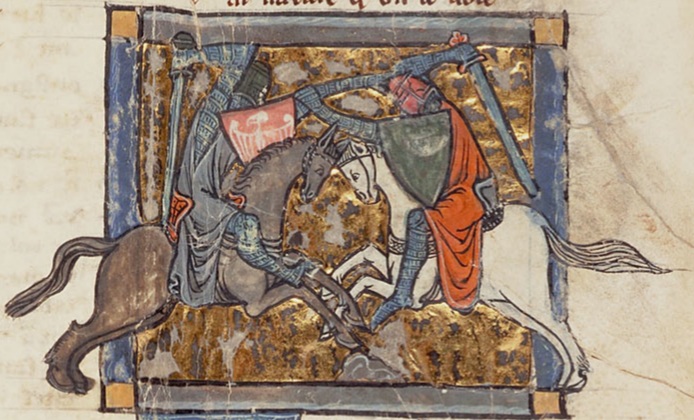
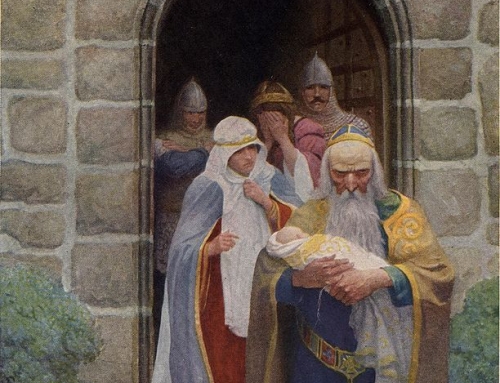
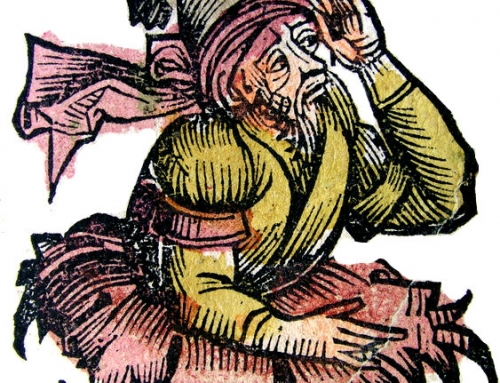

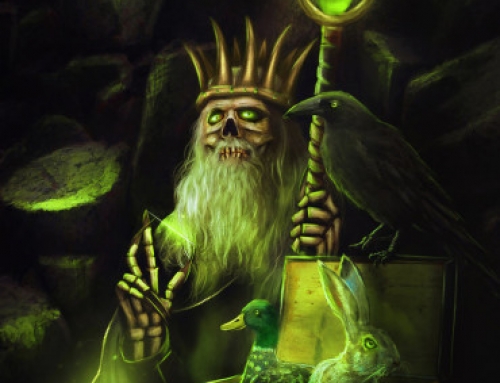
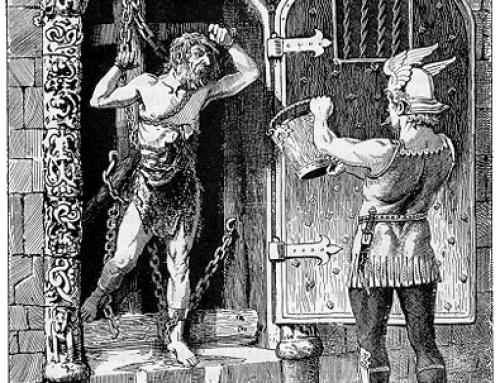
that s really cool, thank you
Hey Jason. New listener. Love jt. So far. What’s the chipset combat music from the first episodes? It’s so good.
I really like the show!! I found it while I was looking for something to listen to and I discovered I LOVE Norse Mythology.
It was a good épisode. I hope the transcript itself is easier to found through the website itself. I have to Google haha.